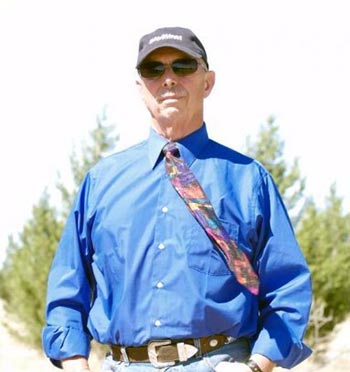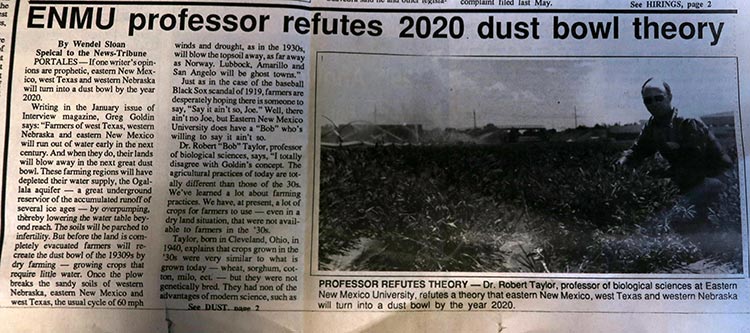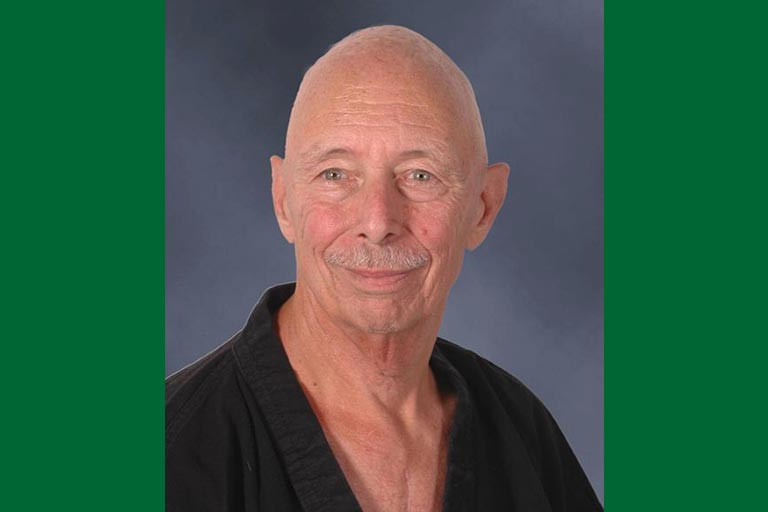On May 24, 1989, the Portales News-Tribune ran an article by the ENMU Director of Media Relations about ENMU biology professor Dr. Robert Taylor refuting an article in Interview Magazine about eastern New Mexico turning into a dust bowl by 2020.
Author Greg Goldin had written, "Farmers of west Texas, western Nebraska and eastern New Mexico will run out of water early in the next century. And when they do, their lands will blow away in the next great dust bowl. These farming regions will have depleted their water supply, the Ogalala Aquifer — a great underground of the accumulated runoff of several ice ages — by overpumping, thereby lowering the water table beyond reach. The soils will be parched to infertility.

"But before the land is completely evacuated, farmers will recreate the dust bowl of the 1930s by dry farming — growing crops that require little water. Once the plow breaks the sandy soils of western Nebraska, eastern New Mexico and west Texas, the usual cycle of 60 mph winds and drought, as in the 1930s, will blow the topsoil as far away as Norway. Lubbock, Amarillo and San Angelo will be ghost towns."
Dr. Taylor had responded, "I totally disagree with Goldin's concept. The agricultural practices of today are totally different than those of the 30s. We've learned a lot about farming practices. We have a lot of crops for farmers to use — even in a dry land situation — not available to farmers then.
Dr. Taylor, born in Cleveland, Ohio, in 1940, explained that crops grown in the '30s were similar to what is grown today — wheat, sorghum, cotton, milo, etc. — but they were not genetically bred. They had none of the advantages of modern science, such as selecting traits that can withstand long droughts.
"In the past, we've been limited to species of plants for cross-pollination to introduce to introduce new traits into plants," Dr. Taylor said. "Now, with genetic engineering techniques, we can use the entire plant kingdom's gene pool. So, we're not limited to just breeding species.
"For example, we can take a gene that resists insects from one plant and genetically transfer it to the cell of another plant. We do it by inserting the DNA of one plant into the cell of another plant, then put it in tissue culture and grow an entire reproductive plant out of it. Then we reproduce these in a laboratory until we get enough to go out in the field.
"Before, we couldn't cross cotton with sorghum, for example, because they could not breed with each other."
Not only genetic engineering has decreased the chances that the area in question will turn into a dust bowl but also farming practices.
"We have farming practices they didn't have in the '30s," Dr. Taylor said. "Now, farmers can plant seeds right on top of last year's crops. They don't even burn off the stubble and plow the land. It keeps enough debris in the soil year-round, so the soil doesn't blow away.
"In the '30s we didn't have contour plowing or knowledge about windbreaks. Back then farmers were breaking out sod which wouldn't pull, and they didn't have plants which would grow in low rainfall, so the soil blew. That's how most of these sand dunes were formed," Dr. Taylor said.
"But now we have the plants for these low rainfall situations. You can grow crops more frequently than they could then, and all of these practices help keep the soil from blowing away."
Although Dr. Taylor does not think the aquifer will go completely dry, he agrees it will get so low it will stop being used for irrigation. He noted that in the early '50s a person could hand-dig a well 15 feet and hit water. Now, one has to go down 100 feet, and the bottom of the aquifer is about 120 feet.
When the water table gets to less than 10 feet in depth in the groundwater, it becomes uneconomical for farmers to pump because they do not get enough water out of the well at one time. So they have to put in two or three wells to pump the same volume. When a farmer is running two or three motors instead of one, the cost of fuel becomes prohibitive. The yield from their crops no longer pays their water bills.
According to Dr. Taylor, the Conservation Reserve Program (CRP) is another factor which will keep eastern New Mexico, west Texas and western Nebraska from becoming a dust bowl. The CRP takes land out of production and requires that it be planted with native grasses, which help prevent wind erosion. The native grasses have to be maintained in order for farmers to receive their federal grants.
Dr. Taylor, who has a Ph.D. in biology/plant science from Texas A&M University, said that people do not have to be concerned about having enough drinking water. While farmers have to be concerned about having enough return on their crops to pay the pumping costs, "Your return is quenching your thirst, and you're willing to pay more for your water."
So, is present-day life as we know it in eastern New Mexico, west Texas and western Nebraska going to blow away with the topsoil by the year 2020?
"We're planning for a brighter future than that," Dr. Taylor said. "You're talking 30 years down the road. With the explosions I see in genetic engineering and farming methods, and with knowledge doubling every ten years, we're going to have a lot more expertise at our fingertips by then.
"So, I don't see as bleak a picture as Mr. Goldin paints. But you have to remember, Interview Magazine is published out of New York. They don't work with this subject every day like the farmers around here do. Saying this area is going to turn into a dust bowl makes for a good storyline," Dr. Taylor laughed.
"But, I never have liked big crowds, so I wouldn't mind if a few people get scared and move away."
Dr. Taylor was recently asked at a Portales restaurant if he had any postscripts to his 1989 comments. Here is what he added:
"First, I'd like to mention a human foible about predictions of the future. We often plan for or predict future events based upon our knowledge and experiences of our past or present. Consequently, someone predicting a future of dust bowl days 30 years ago most likely based their idea upon past and present agriculture practices of that earlier time. Given the crops and practices of those earlier years, 30 years ago makes their prediction understandable.
"In the revisit of that almost 30-year-old article where my comments about that prediction not being quite 'so' were based upon discoveries that were in the laboratories in those long-ago days but had yet not reached their fruition for planting in agricultural fields. Some of my nay-saying on a future of dust-bowl days also was based upon tillage and agricultural practices that had also not yet passed the tests of time to reach their current fruition.

"Back then, scientists were just learning how to transplant genes from one plant to another. They also were learning how to grow that plant in tissue culture with foreign genetic material in it which was not common to its species. Doing so allowed scientists to reproduce new 'genetically engineered' plants. Those long-ago early new plants were first tailor-made to repel common insect pests and withstand drought. Today all that early research and laboratory work is 'history.'"
Crops grown in agriculture today which use those genetically modified organisms (GMO's) are common. When you buy an ear of sweet corn in the market, you hardly ever see any worm damage in the tassel. It is not because that ear of corn was bathed in insecticides. It is because that ear of corn has been genetically modified to not be 'tasty' to the ear-worms that used to invade the crop.
"In addition, genes have been transplanted so crops that grew well in one geographical location or environment, but didn't produce certain amino acids and/or other human required nutrients, could start producing them. Humans could now eat what they grew and have complete nutrition.
"These two advances are what is feeding the world today. Without these, there would be much greater malnutrition, hunger and suffering globally than there currently is. At eight billion, we have an unprecedented number of people on planet Earth. These advances were mandatory to support this population. As any expectant mother knows today, malnutrition in her diet can lead to many different birth defects.
"In addition to just the changes we've wrought in agricultural crops and tillage, there have been equal advances in watering practices and changes in water availability, too.
"We knew, even back in those days of the 1989 article, the water we were drawing out of the Ogallala Aquifer was a finite resource. There was a limited amount of it, and it was not being recharged with respect to its depletion rate. Translated? It could/would run out. And it has in some places. In some places, there is insufficient water to harvest irrigated crops in a dry year. In those places, crops are grown only in wet years, or not grown.
"The crop selections are limited, too. If a wet year is planned on, and a high water-requiring crop is planted, there will not be much growth if insufficient rainfall materializes. Modern tillage practices keep the wind from blowing the soil, thus reducing dust bowl experiences in those dry years.
"Conservation has also happened in those 30 years. Farmers have implemented the use of drop-nozzles on their irrigation which puts water down at the soil level to reduce the 90 percent loss from evaporation that was experienced with overhead sprinkling. In addition, everyone seems to be more water conscious: The cities of Portales and Clovis have watering days and non-watering days.
"The University, many businesses and homes have replaced conventional toilets with water-conserving varieties that use about a gallon a flush (compared to those earlier models that required plus-or-minus 5 gallons a flush). More people are xeriscaping rather than planting and/or watering grass. More people are using drip irrigation to water their landscaping shrubbery and home gardens.
"Drip irrigation puts water right at the plant's root zone, and none is wasted. Water-conscious people replace their leaking faucets. Some people use water-catchment devices off their gutters and out-buildings to trap and use rainwater for their landscaping and gardening needs.
"Everyone seems to be doing their part to conserve the foundation of our lifestyle — water. Almost everyone recognizes water is the key ingredient to our existence. Our bodies are 98 percent water.
"Without it, we would not be able to live here nor enjoy the life we experience on the High Plains of eastern New Mexico.
"We can stretch our water resources. We can even bring water from distant reservoirs. However, we can't go back to the days of 'more water than we can use.'
"California's drought and in so many other places in the world verified it. With eight billion on the planet now, all dependent upon fresh water (compared to historically only two billion for several millennia back), we've little choice but to conserve.
"I think we're slowly coming to that realization."




